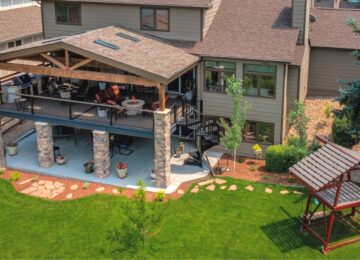Lighting blends functionality and aesthetics more than any other aspect of home design, maybe. Despite its seeming simplicity, lighting is sadly not straightforward. The delicate balance between aesthetics and practicality makes oriental lighting both a science and an art, which is why it can be so complicated.
We will thus talk about the significance of lighting in interior design and why you should take a bit more time when deciding how to illuminate your space.
Color and Light
Without light, colour as we know it would not exist. The wavelengths (the light itself) that are reflected from the light’s source are what allow us to discern colour. Only in the presence of light can colour be perceived, and how well a room is lit will affect how we interpret its hues.
A colour may seem to be a certain hue when illuminated by one source of light, but it may not be the same in an area with diverse illumination. For instance, most individuals would agree that a lemon is yellow in most situations. Technically, however, that is only accurate in natural or artificial sunshine.
The lemon would no longer seem to be yellow in dimly light spaces, but rather a variety of hues of grey. Additionally, the hue would change somewhat under various lighting situations. The lemon could seem more greenish-yellow if the light source is pure blue, and it might appear more orange-yellow if the light source is pure red.
Lighting in and around your home: its purpose
In essence, light serves a simple purpose: by illuminating a room, it gives us the vision we need to complete activities and carry out particular duties. We can view a room thanks to the usage of lighting. But the use of light transforms any area in a spectacular way.
Without sufficient illumination, it is impossible to completely appreciate a home’s interior design, but with careful planning, you are able to appreciate the beauty and decoration of the area. A well-lit area may highlight every single aspect of a room, including the flooring, furnishings, and any textures. With the right lighting, the inside of your house will come to life.
Quantity vs quality
In terms of illumination, quality often prevails above quantity. For instance, most bedrooms often feature an overhead lamp, bedside lights, and potentially additional task lighting like a desk lamp. A well-lit bedroom might be achieved by turning on every light, but it would be excessive.
To disperse enough light to illuminate the whole space, an overhead light should work. But you probably don’t want to have a lot of light while you’re getting ready for bed. For this reason, we often put on a bedroom light to make the room seem relaxing.
Temperature of colour
Color temperature refers to how the light appears (also known as its colour). The colour temperature of a light bulb enables us to predict how the light will seem and behave in relation to the surroundings. Warm-white to pure daylight are all within the colour temperature range.
Despite its name, warm light is warmer than genuine daylight and is on the lower end of the temperature range. Warm light has a tendency to seem amber or orange in colour. This creates a warm and welcoming atmosphere in the space.
A cool-white lies between warm light and actual daylight. Cool-white offers a lively and brilliant light by striking a nice balance between the two extremities of the spectrum. Pure white light, or true daylight, is exceedingly harsh and clear.










